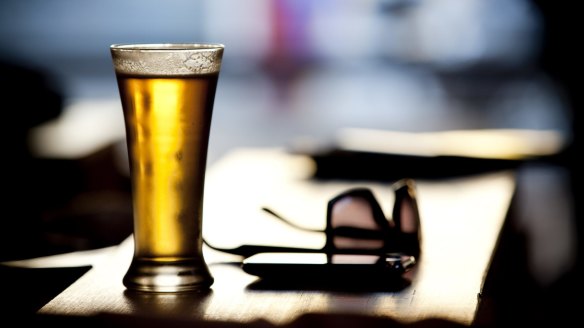In defence of craft beer

COMMENT
There's a war against craft brewing in Australia and it's coming from every direction.
Yet another anti-craft beer column did the rounds last week, with the author suggesting craft beer is "un-Australian". "Beer snobs," the writer said, "are phenomenally irritating, often even worse than the narky farmers' market set."
You can't please everyone now, can you?
But if you're calling for the axing of craft beer, you need to understand craft brewing has a long history in this nation and if global trends are any guide, it's not going away anytime soon. In fact, it's only going to keep getting bigger and better.
Thomas Cooper's beer, for example, has come a long way since the first batch was brewed in 1862 at his house in Adelaide. The business is now the largest Australian-owned brewery - that's a fair effort for a company that started out as a backyard operation, like many craft brewers today.
Welcome all players
When I hear people say they'd rather have a Reschs, or a VB or a XXXX Gold instead of a pint of a finely crafted local beer from a small brewery, I say "that's fantastic – enjoy that beer".
But there's no need for craft beer to be slammed as something purely for "beer snobs" or "craft beer geeks", as the two can live side-by-side and that's the way it's going to be for many years to come.
And what's not to love about craft beer? In Australia there are now hundreds of craft beers in the market, from fruity hefeweizens to deliciously sour saisons, crisp lagers and red ales that rival the best from Europe and the US. Like wine, there are flavours to satisfy all palates and we're lucky to have such a wide choice of great beers.
Even the big beer corporations are embracing the revolution. Many pubs that have deals with the main suppliers are now being allowed to have up to a third of their taps for craft beers, a far cry from what was 10 per cent or less a few years ago – remembering that without the big breweries' financial support, many pubs wouldn't be in operation today.
I enjoy Carlton, VB, James Boags and lots of other big brand beers, but the beauty of craft beers are they offer new experiences, new flavours and tastes that most of the big brewers have never really offered in Australia.
And unless you are at a craft beer pub such as The Local in Melbourne's St Kilda or Sydney's Surry Hills, you're more than likely to have one or two craft beers before settling back in to mainstream lagers and draughts. Financially, yes, mainstream beers do make more sense if you're having more than three or four drinks. Craft beers are more expensive to produce and are therefore more expensive.
Flavours galore
Then there's the flavour debate. I have been drinking craft beers for more than 15 years – thanks to extensive travel in the US, where craft brewing has become one of the fastest-growing beverage trends (in San Diego there are now 100 craft breweries and brewpubs) and combined sales for the entire industry just overtook Budweiser – so I know all too well how much brewers like creating these overly green, hoppy and intense double, triple and even quadruple IPAs.
But things have been changing in recent times and that's thanks to brewers such as Richard Adamson from Sydney's Young Henrys, who has been making great, flavoursome easy drinking beers such as the natural lager and real ale, which rate low on the bitterness scale.
There are other easy-drinking styles that are being produced en masse by craft brewers locally, like witbiers, hefeweizens and saisons that are known for fruit-driven flavours and fluffy white heads.
At the same time, Young Henrys also produce a hop ale, and as the name suggests it is one intense and strong beer. Beers like that aren't everyone's cup of tea, but for some people, that's exactly what they are looking for in a craft brew.
That's when it comes down to education and perhaps that's what's needed in the craft beer industry. If you were eyeing off the hop ale on tap in a pub or bottle shop, a barkeep letting you know what you're in for before sipping a beer full of green goodness would help dramatically.
Eco and economic cred
Now also think about this – craft beer is good for sustainability and for the Australian economy.
Beer being produced locally cuts down on transport costs and emissions, especially when made with local produce.
More craft breweries are also located in regional areas, such as Stone and Wood in Byron Bay, Burleigh Brewing on the Gold Coast and Bridge Road in Beechworth, Victoria. These breweries are supporting their local communities by hiring locals in regional areas, creating jobs and boosting the tourism industry.
And don't the profits from some of the other larger producers go overseas, as opposed to craft breweries, where it remains local? Why is it then so "un-Australian" to buy a craft beer at a pub? With every schooner, pot, bottle or growler, you're supporting Australian jobs, producers and that sounds very Aussie to me.
Craft beer will continue to grow. Just as we have seen with farm-to-table produce and local wine in restaurants, Australian-made gins and whiskeys in bars, and locally roasted coffee in cafes, craft beer is having its day and it's great to see.
If you want to drink a VB, go for it. But don't slam the other bloke at the bar whose nose is buried a glass of Bridge Road's hefeweizen. Craft beer is here for good and it's going to be poured alongside VB for years to come. Don't like it? Find another pub.
James Wilkinson has been writing about the liquor industry for 20 years and is a contributing editor for Beer and Brewer magazine, the brewing industry's bible.